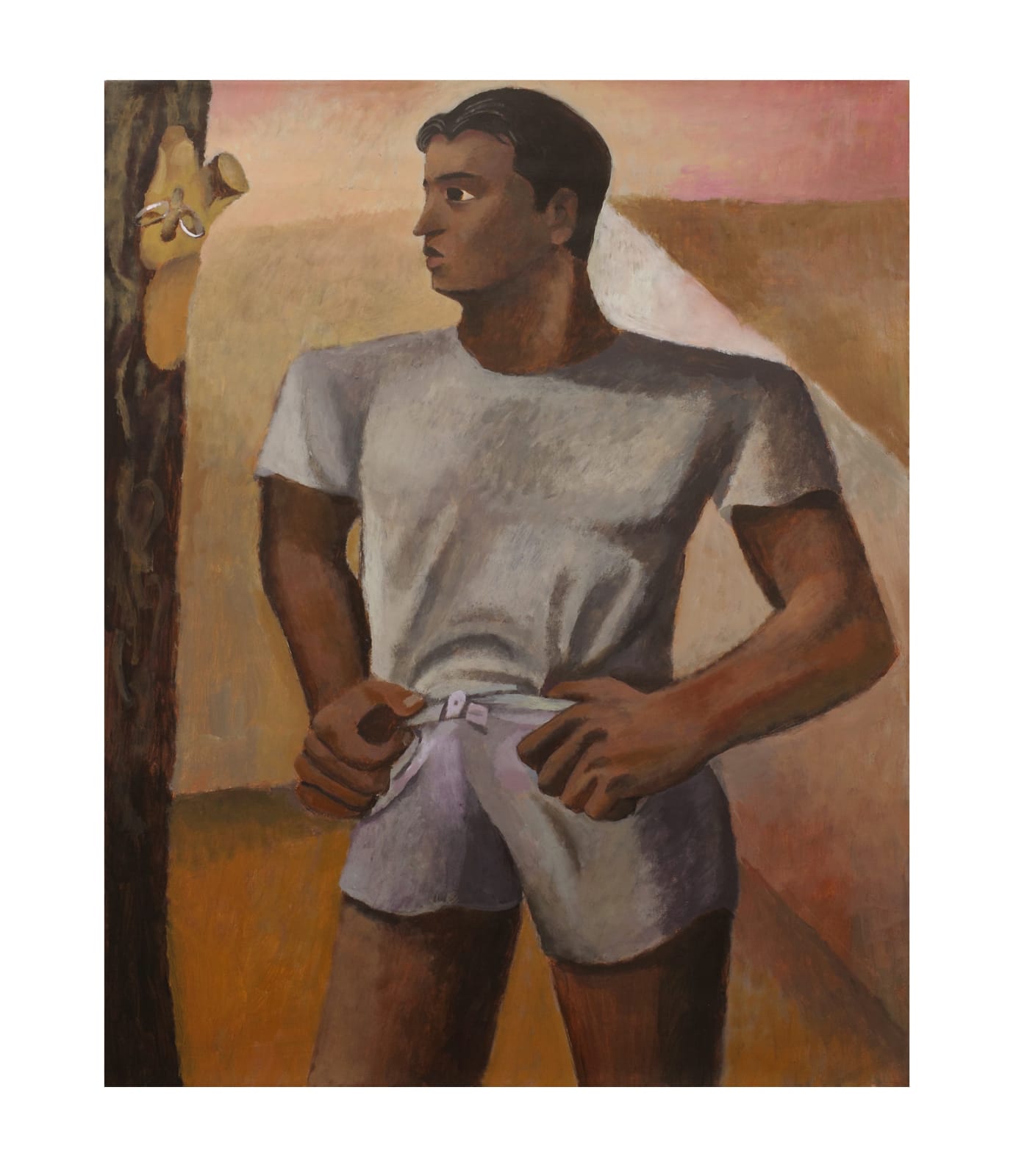Zhang Shangfeng China, b. 1998
50 × 40 cm
This painting depicts a moment in a boy’s growth. The soft tones of the painting intertwine with an inherent sense of uncertainty, where the background could be a road or a wall, with no clear distinction between the two.
The subject in the painting is easily reminiscent of an adult male, tall in stature, yet wearing summer clothes that are clearly too small for him. This mismatched attire creates a strange contrast. However, the pose with his hands on his hips evokes a sense of a child mimicking an adult, encouraging himself. This conflict and subtlety coexist, mirroring my own mindset when I reflect on the past three years—I’m still working in the same studio, yet everything has changed. The same summer, yet the boy who once searched for cicadas under the walnut tree has become a memory, and the people I once caught cicadas with are now far out of reach, much like the seasons—one day, you simply realize that summer has passed.
The man gazes directly at the cicada on the tree, as if contemplating the fragility and passing of a particular stage in life. What I wish to express is not merely nostalgia, but an existential reflection on growth, the passage of time, and the irreversibility of certain moments in life.
In Chinese culture, the story behind “catching cicadas” is tied to their symbolism of rebirth and resurrection, stemming from their unique life cycle of shedding an old skin and emerging anew. It has long been a popular summer pastime for children, and cicadas have been celebrated in classical Chinese texts such as Shiji (Records of the Grand Historian) for “floating above worldly dust.

